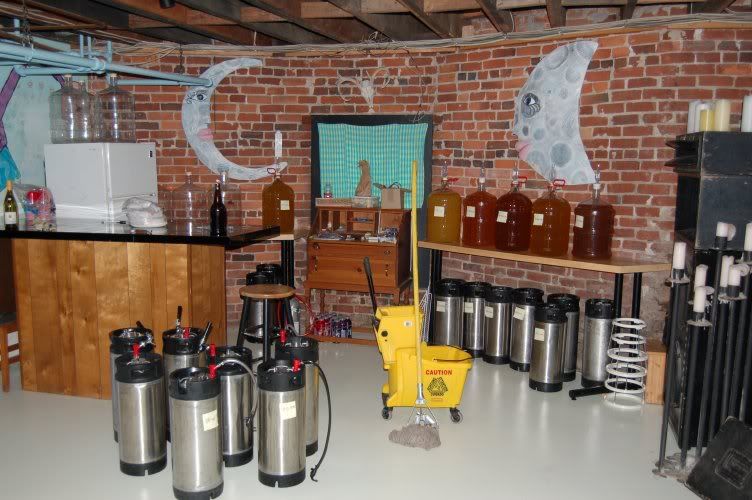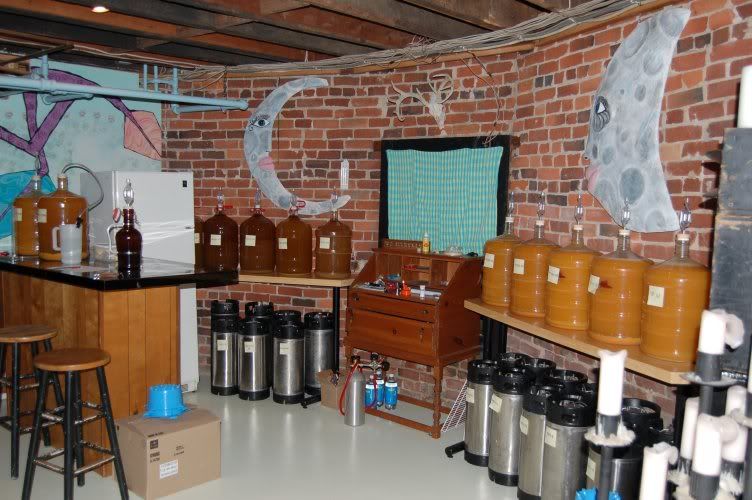CvilleKevin
Well-Known Member
What you do is up to you, but I can assure you that cold crashing works if you do it right. I've made well over 400 gallons of cider in the past 10 years, cold crashed most of it, store at room temp and never had a problem. I do mostly kegs, but I've also done close to 300 liter bottles, also stored at room temp. The only time I've ever cracked a bottle was with a wild yeast batch that I made last year and crashed at 1.020. One of the bottles cracked over the summer, sometime in July. I knew I was pushing the envelope with that batch, usually I crash at 1.010 or lower.
I've never had a problem cold crashing gallon batches, regardless of the yeast, other than the aforementioned bottle of wild yeast. I've also never had a problem with 5 gal batches of Nottingham, S04, US05 or 3068. 5 gal batches of 4184 and S23 have been a little tougher to stop.
Pasteurized juice does take longer to crash. Probably because the yeast binds to the pectin, which is slow to fluctuate. I forgot to mention that before. I havent used pasteurized juice in a while.
At any rate, its easy enough to test this yourself. Rack it, chill it for a day or two, rack it again and let it come back up to room temp. Let it sit for as long as you want. If the sg stays stable, you're good. If not, you can drink it, keg it or sorbate and bottle it. Either way, you havent lost anything.
If you cold crash and bottle it though, its going to be still. All the priming sugar is going to do is sweeten it.
k-meta and k-sorbate both leave easily discernible tastes. The k-meta is less obnoxious if added after fermentation, but still has some taste. k-sorbate leaves a more prominent taste, but it is less objectionable than the k-sorbate. This is something you can easily verify yourself if you are bottling - bottle a few before you add any chemicals. Then add the chemicals and bottle the rest. Then you can compare them later. You may find that you like the taste of the sorbate, but you will definitely notice a difference.
I have backsweetened kegs with a mix of organic cane sugar and dextrose if I accidentally let one ferment out too far. You can get an acceptable taste, but its not the same as the natural sugar. The last half a percent or so is where most of the complex sugars in the apple juice get fermented and those complex sugars are what gives you the apple taste. Cane and corn sugar can get you back to something that is drinkable, but its not the same flavor - at least not if you are starting with fresh pressed apple juice.
I've never had a problem cold crashing gallon batches, regardless of the yeast, other than the aforementioned bottle of wild yeast. I've also never had a problem with 5 gal batches of Nottingham, S04, US05 or 3068. 5 gal batches of 4184 and S23 have been a little tougher to stop.
Pasteurized juice does take longer to crash. Probably because the yeast binds to the pectin, which is slow to fluctuate. I forgot to mention that before. I havent used pasteurized juice in a while.
At any rate, its easy enough to test this yourself. Rack it, chill it for a day or two, rack it again and let it come back up to room temp. Let it sit for as long as you want. If the sg stays stable, you're good. If not, you can drink it, keg it or sorbate and bottle it. Either way, you havent lost anything.
If you cold crash and bottle it though, its going to be still. All the priming sugar is going to do is sweeten it.
k-meta and k-sorbate both leave easily discernible tastes. The k-meta is less obnoxious if added after fermentation, but still has some taste. k-sorbate leaves a more prominent taste, but it is less objectionable than the k-sorbate. This is something you can easily verify yourself if you are bottling - bottle a few before you add any chemicals. Then add the chemicals and bottle the rest. Then you can compare them later. You may find that you like the taste of the sorbate, but you will definitely notice a difference.
I have backsweetened kegs with a mix of organic cane sugar and dextrose if I accidentally let one ferment out too far. You can get an acceptable taste, but its not the same as the natural sugar. The last half a percent or so is where most of the complex sugars in the apple juice get fermented and those complex sugars are what gives you the apple taste. Cane and corn sugar can get you back to something that is drinkable, but its not the same flavor - at least not if you are starting with fresh pressed apple juice.






